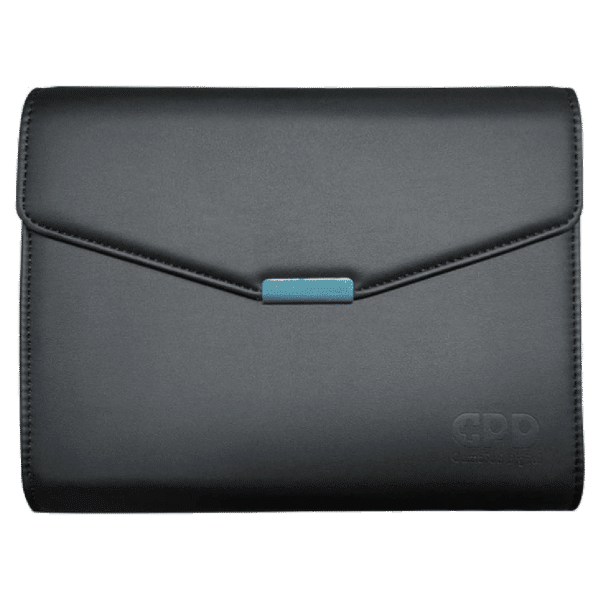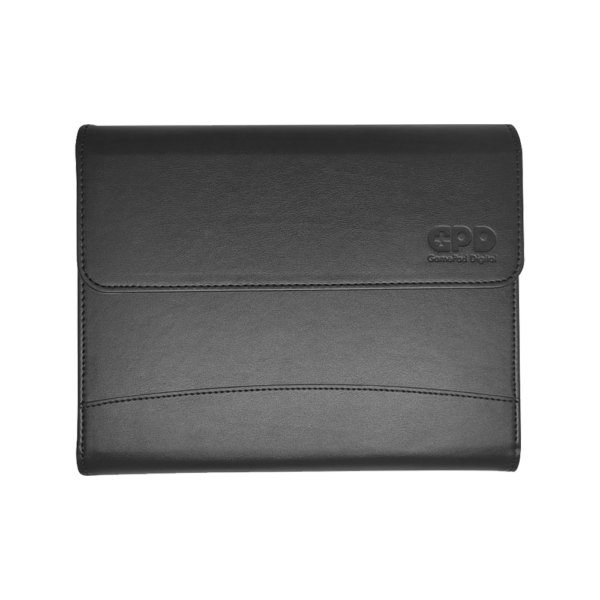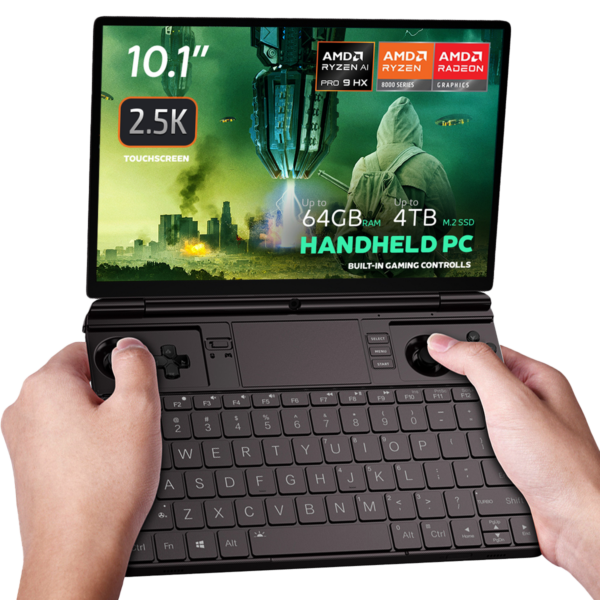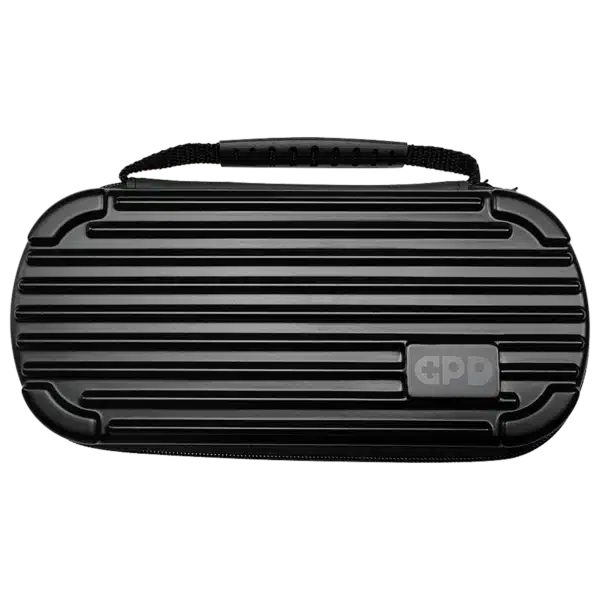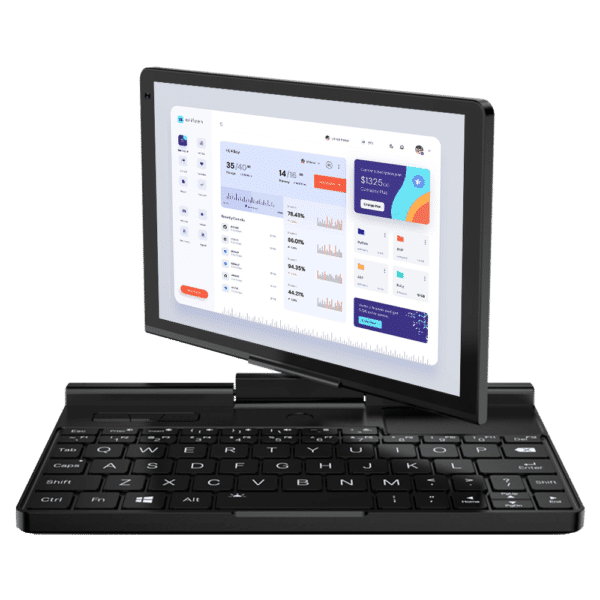
GPD WIN 4 2025 vs GPD WIN Mini 2025 – Which is best for you?
GPD continues its trend of refreshing its popular handheld gaming PCs, and 2025 brings us updated versions of the GPD WIN 4 2025 and GPD WIN Mini 2025. Both devices now feature the powerful AMD Ryzen AI 9 HX 370 processor, promising significant performance boosts over previous generations. While they share the same core processing power, their distinct form factors, features, and subtle performance differences cater to different user preferences.
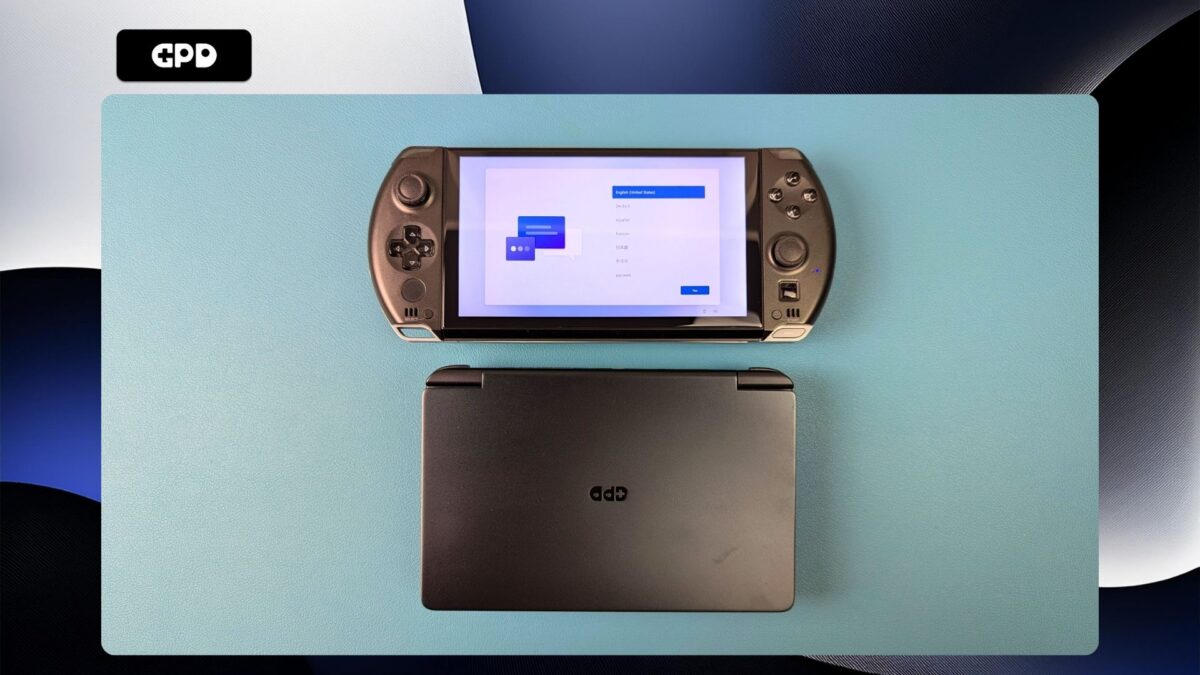
This article compares the GPD WIN 4 2025 vs GPD WIN Mini 2025 to help you determine which is the better portable gaming computer for your needs. We’ll delve into their physical characteristics, including size, weight, displays, and controls. We will also examine their technical specifications, benchmark performance based on provided reviews, eGPU compatibility, and conclude with final thoughts on which device might be the better fit for you.

GPD WIN 4 2025
Form Factor, Display, and Controls
The most immediate difference lies in their design. The GPD WIN 4 2025 retains its familiar compact, slider design, reminiscent of older portable consoles. It measures approximately 6 x 3.6 x 1.1 inches and weighs 598g. Its 6-inch, 1080P H-IPS display slides up to reveal a small QWERTY keyboard suitable for thumb-typing. The controls feature standard dual analogue sticks, a D-pad, gaming buttons, shoulder/trigger buttons, a fingerprint scanner, and a unique optical finger mouse.
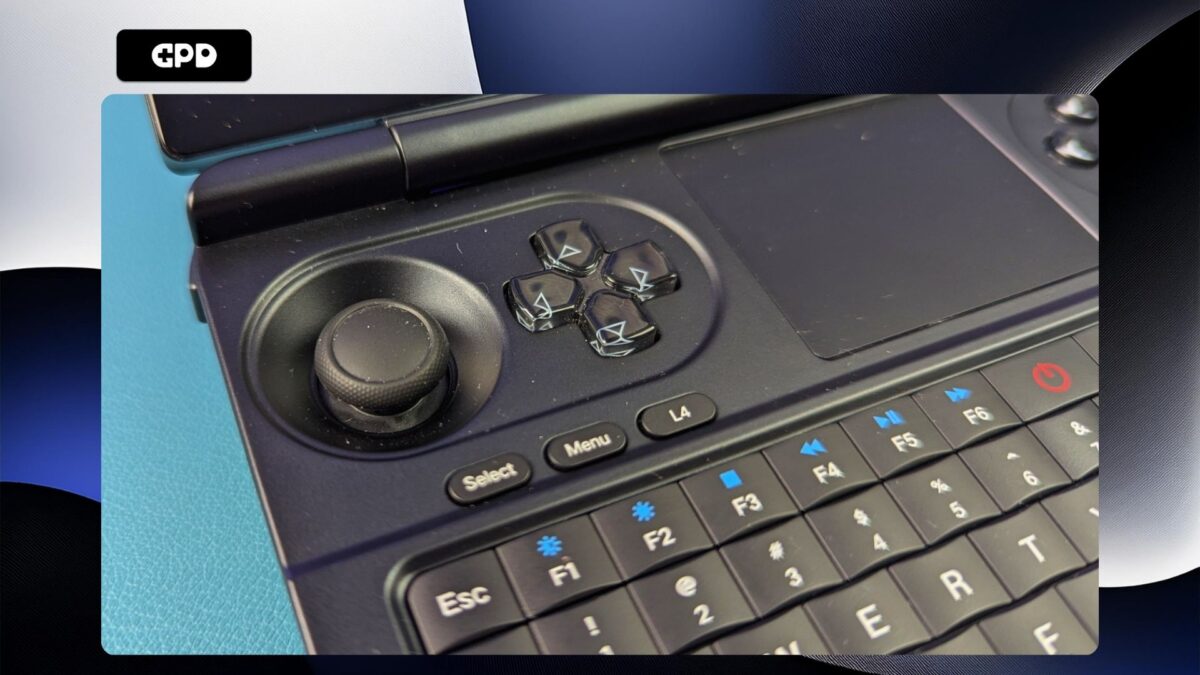
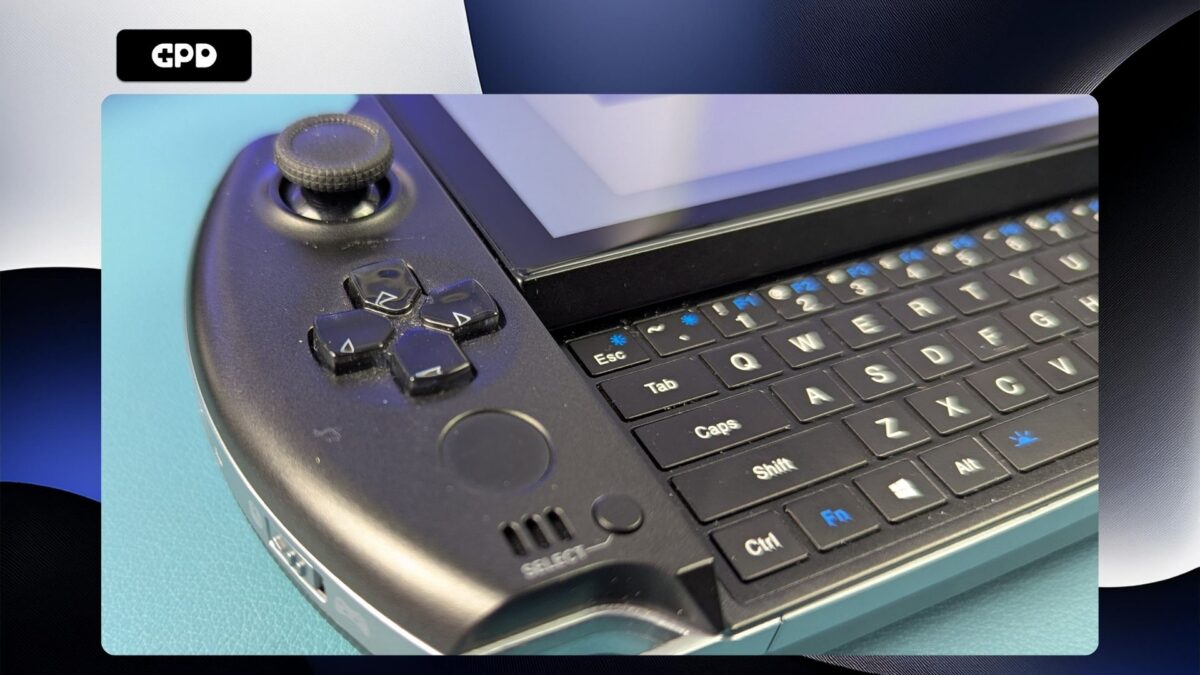
Conversely, the GPD WIN Mini 2025 adopts a clamshell (flip) design, resembling a miniature laptop. It’s slightly larger but lighter than the WIN 4, measuring 6.7 x 4.2 x 1 inches and weighing 555g. Opening the lid reveals a larger 7-inch LTPS touchscreen display with a higher 120Hz refresh rate, VRR, and AMD FreeSync support. Below the screen are the gaming controls (dual sticks, D-pad, buttons) flanking a central touchpad (non-clickable) and a compact keyboard, also best for brief typing.
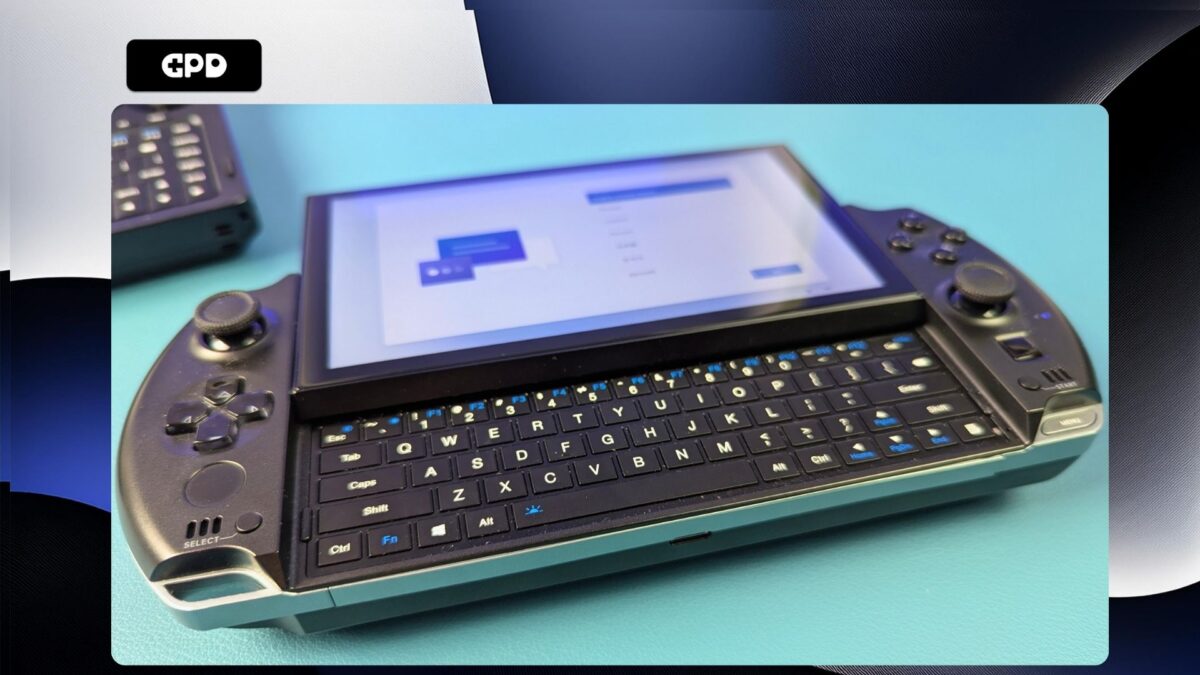
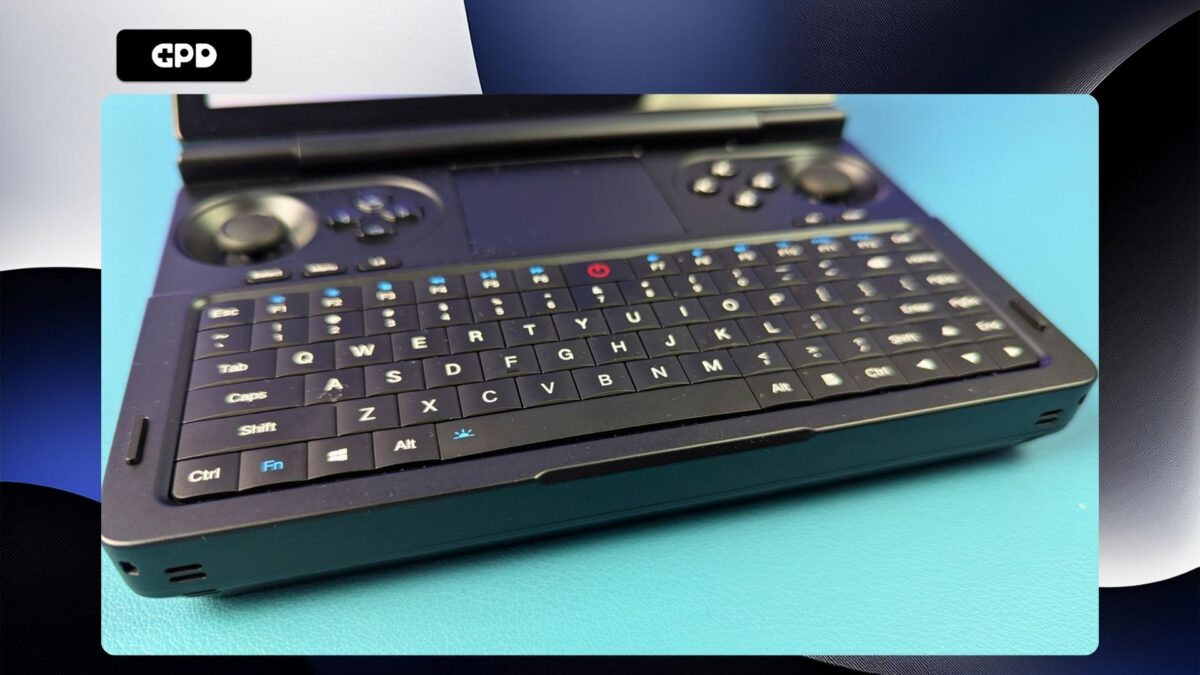
The Mini’s larger, higher-refresh-rate screen is a key advantage, while the WIN 4’s integrated optical mouse offers an alternative input method. When considering a compact gaming PC, these design distinctions play a big role in usability.
Technical Specifications
Both the GPD WIN 4 2025 and GPD WIN Mini 2025 models utilise the latest AMD Ryzen AI 9 HX 370 processor paired with AMD Radeon 890M graphics. The GPD WIN 4 2025 features 32GB of LPDDR5x RAM and options for 1TB, 2TB, or 4TB NVMe SSDs (2280 size).
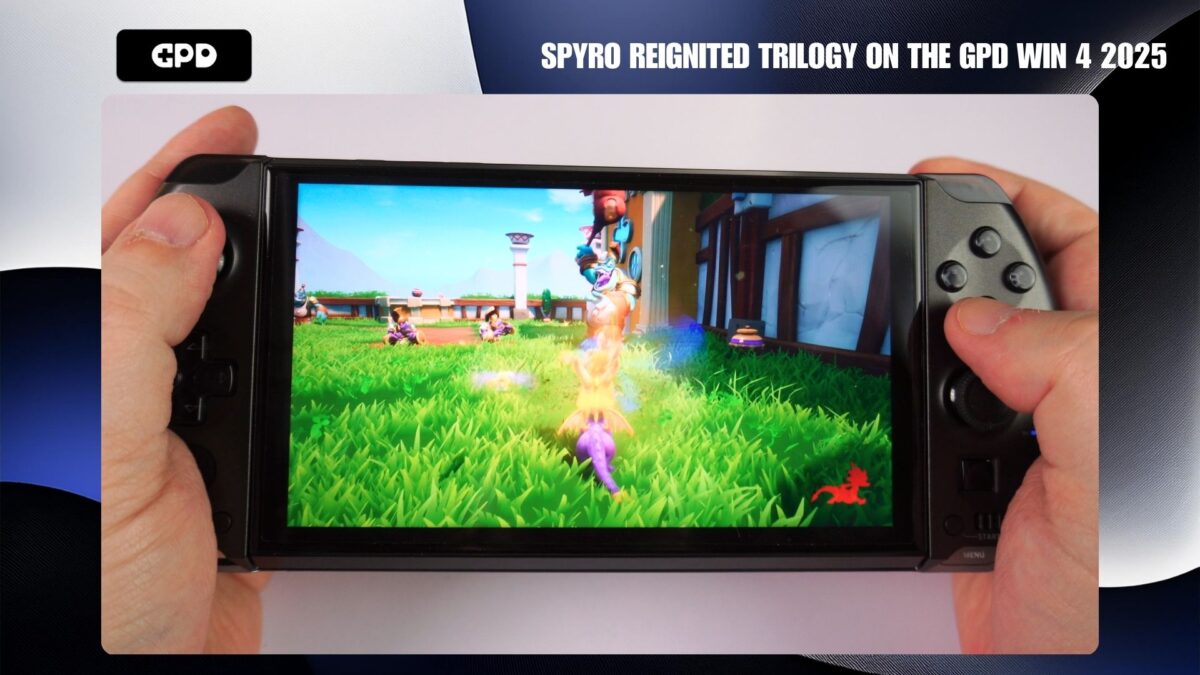
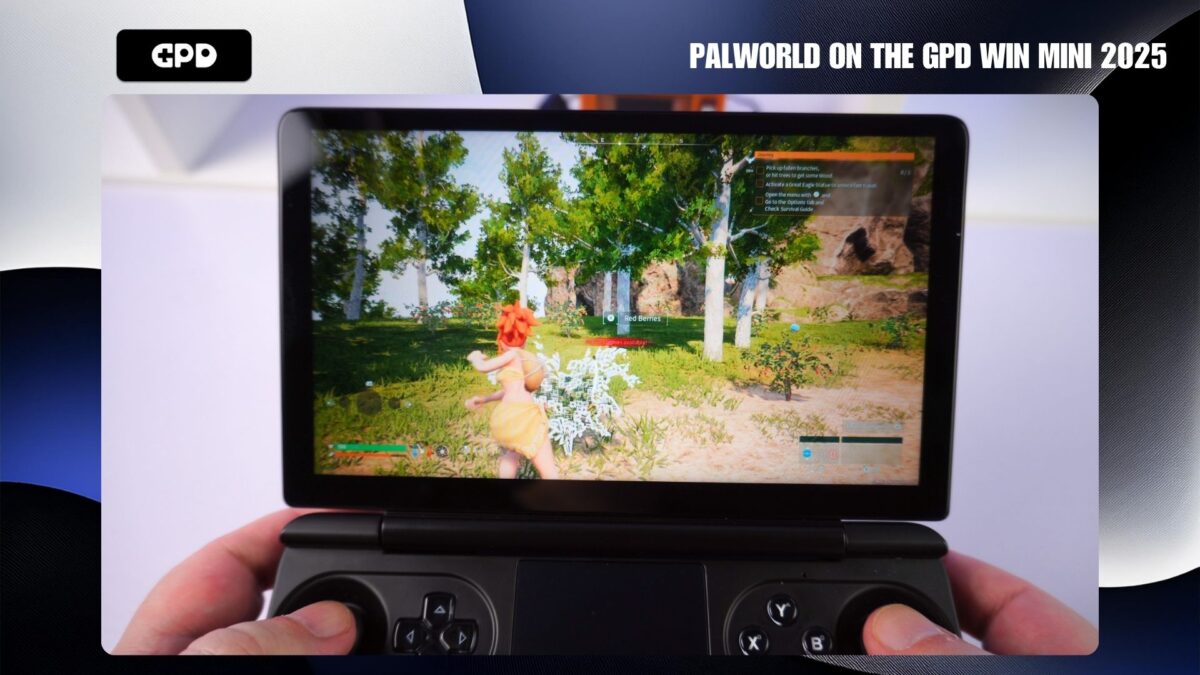
The GPD WIN Mini 2025 offers 16GB or 32GB LPDDR5x RAM options and come with 1TB, 2TB or 4TB of SSD storage, also using the 2280 NVMe format. Both devices support Wi-Fi 6E and Bluetooth 5.3 for connectivity, making them highly capable mobile gaming PC options.
| GPD WIN 4 2025 | GPD WIN MINI 2025 | |
| CPU | AMD Ryzen AI 9 HX 370, 12 cores, 14 threads up to 5.1GHz | AMD Ryzen AI 9 HX 370, 12 cores, 14 threads up to 5.1GHz |
| GPU | AMD Radeon 890M up to 2,900MHz | AMD Radeon 890M up to 2,900MHz |
| RAM | 32GB LPDDR5X | 16GB or 32GB LPDDR5X |
| STORAGE | 1TB, 2TB or 4TB NVME PCIE 4.0 2280 | 2TB or 4TB NVME PCIE 4.0 2280 |
| DISPLAY | 6″ H-IPS touchscreen, up to 1920×1080 resolution, 40Hz & 60Hz, 368 PPI | 7″ LTPS touchscreen, up to 1920×1080 resolution, 120Hz, 16:9, 299 PPI |
| COMMUNICATIONS | Wi-Fi 6E Bluetooth 5.3 | Wi-Fi 6E Bluetooth 5.3 |
| I/O | 1x USB4 Type-C 1x USB 3.2 Gen 2 Type-C 1x Oculink 1x Micro SD Card Slot 1x 3.5mm headphone port | 1x USB 4.0 Type-C 1x USB Type-C 3.2 Gen2 1x USB Type-A 3.2 Gen2 1x Micro SD Card Slot 1x 3.5mm headphone port |
| BATTERY | 45.62Wh rechargeable battery | 44.24Wh rechargeable battery |
| SIZE | 6 x 3.6 x 1.1 inches / 22.0 x 9.2 x 2.8 cm | 6.7 x 4.2 x 1 inches / 17.2 x 10.9 x 2.7 cm |
| WEIGHT | 598g / 1.31 lbs | 555g / 1.2 lbs |
| BUY | HERE | HERE |
Battery Life, Fan Noise & Temperature comparisons
Regarding battery life under heavy load (running Cinebench loop at 28W TDP, full brightness), the WIN 4 lasted around 57 minutes with its 45.62Wh battery. The WIN Mini, with its 44.2Wh battery, managed a slightly longer 1 hour and 8 minutes under the same conditions. Average usage battery life for both is estimated between 3 to 6 hours depending on the workload.
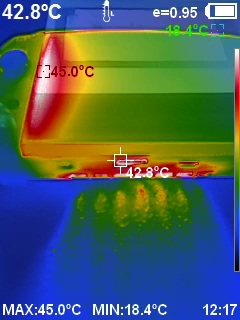
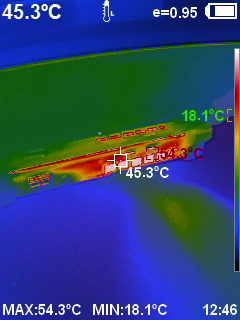
In thermal and noise tests during Cinebench runs, both devices reached a maximum fan noise of 64 dB. The WIN 4 recorded a maximum temperature of 45°C, while the WIN Mini reached a higher 55°C. These figures are important when choosing a handheld gaming computer for long sessions.
GPD WIN 4 2025 vs GPD WIN Mini 2025 – Benchmark Showdown
While the GPD WIN 4 2025 vs GPD WIN Mini 2025 share the same chipset, differences in cooling design, power delivery, and overall form factor can lead to subtle but impactful performance variations. To help you decide which device best suits your gaming or productivity needs, we’ve benchmarked both models across a range of synthetic tests and real-world gaming scenarios. Below, you’ll find a breakdown of how each device performs in CPU-heavy tasks, graphical benchmarks, and demanding AAA games like Cyberpunk 2077 and Forza Horizon 5.
Geekbench 6
The GPD WIN Mini 2025 slightly outperforms the WIN 4 2025 in Geekbench 6. It scores 2900 in single-core and 13,256 in multi-core tests, compared to the WIN 4’s 2884 and 12,419 respectively. This minor lead suggests marginally better raw CPU performance, especially in multithreaded applications. For anyone looking to run CPU-intensive tasks on a portable gaming PC, the WIN Mini might have a small edge.
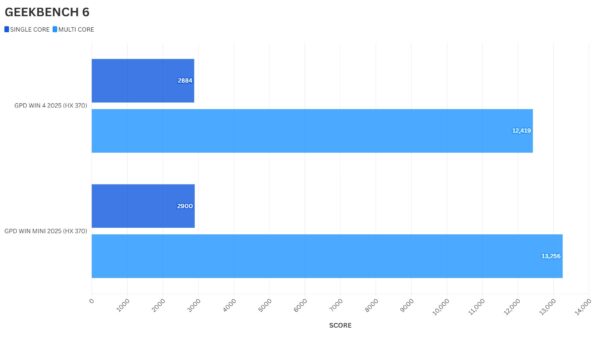
3DMARK Time Spy, Night Raid & Fire Strike
In 3DMARK benchmarks, the WIN Mini 2025 leads in Time Spy (3879 vs 3762), but the GPD WIN 4 2025 pulls ahead in Night Raid (31627 vs 28959) and Fire Strike (8455 vs 7793). This shows a slight tradeoff where the Mini excels in modern DirectX 12 workloads (Time Spy), while the WIN 4 performs better in more varied or legacy graphics tasks. Regardless, both stand out as capable compact gaming PC choices.
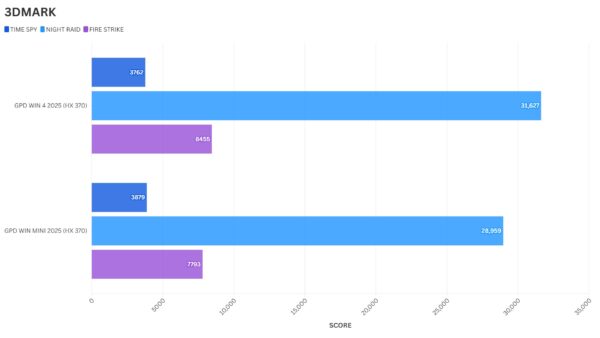
Cinebench 2024
For Cinebench 2024, the WIN 4 edges out the Mini in both single-core (117 vs 114) and multi-core (951 vs 849) tests. This suggests the WIN 4 may hold a small advantage in CPU-intensive creative tasks like rendering or encoding over the GPD WIN Mini 2025. Those seeking a mobile gaming PC that doubles as a productivity tool may prefer the WIN 4.

Forza Horizon 5
At 1080P 28W, the WIN Mini scores 115 FPS versus 112 FPS on the WIN 4. At 720P 28W, the gap widens slightly, with the Mini hitting 156 FPS against the WIN 4’s 149 FPS. The difference is minor but consistent, giving the GPD WIN Mini 2025 a slight lead in racing game performance across resolutions. This minor edge may appeal to those seeking a responsive and smooth portable gaming computer experience.
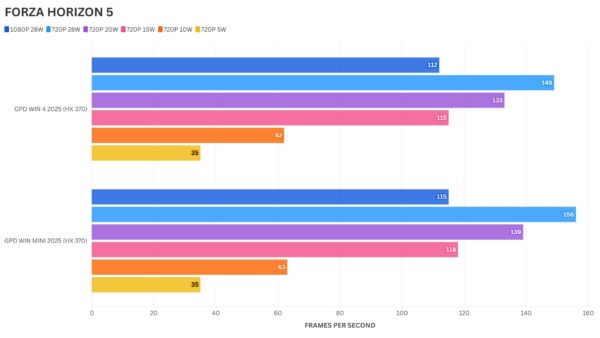
Shadow of the Tomb Raider
Both devices tie at 87 FPS in 1080P 28W. However, at 720P 28W, the WIN Mini reaches 117 FPS, narrowly ahead of the WIN 4’s 115 FPS. While gameplay at higher settings is equivalent, the WIN Mini again shows marginal gains at lower resolutions. These kinds of frame rate wins can influence your choice when comparing the GPD WIN 4 2025 vs GPD WIN Mini 2025.
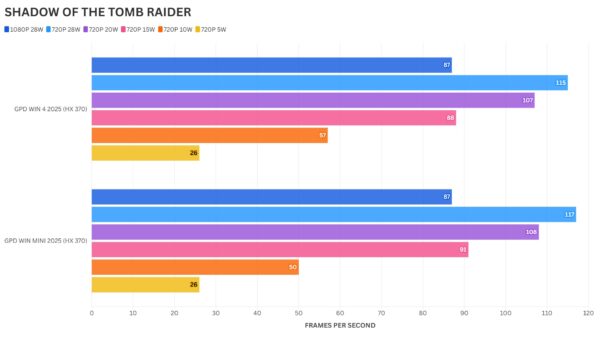
Cyberpunk 2077
In Cyberpunk 2077 at 1080P 28W, both devices are virtually identical (48.19 FPS for WIN 4 vs 48.05 FPS for WIN Mini). At 720P 28W, the WIN Mini takes a clearer lead with 72.61 FPS, compared to 69.8 FPS on the GPD WIN 4 2025. The Mini’s GPU efficiency appears slightly better at lower resolutions in demanding titles, reinforcing its status as a high-performance handheld gaming computer.

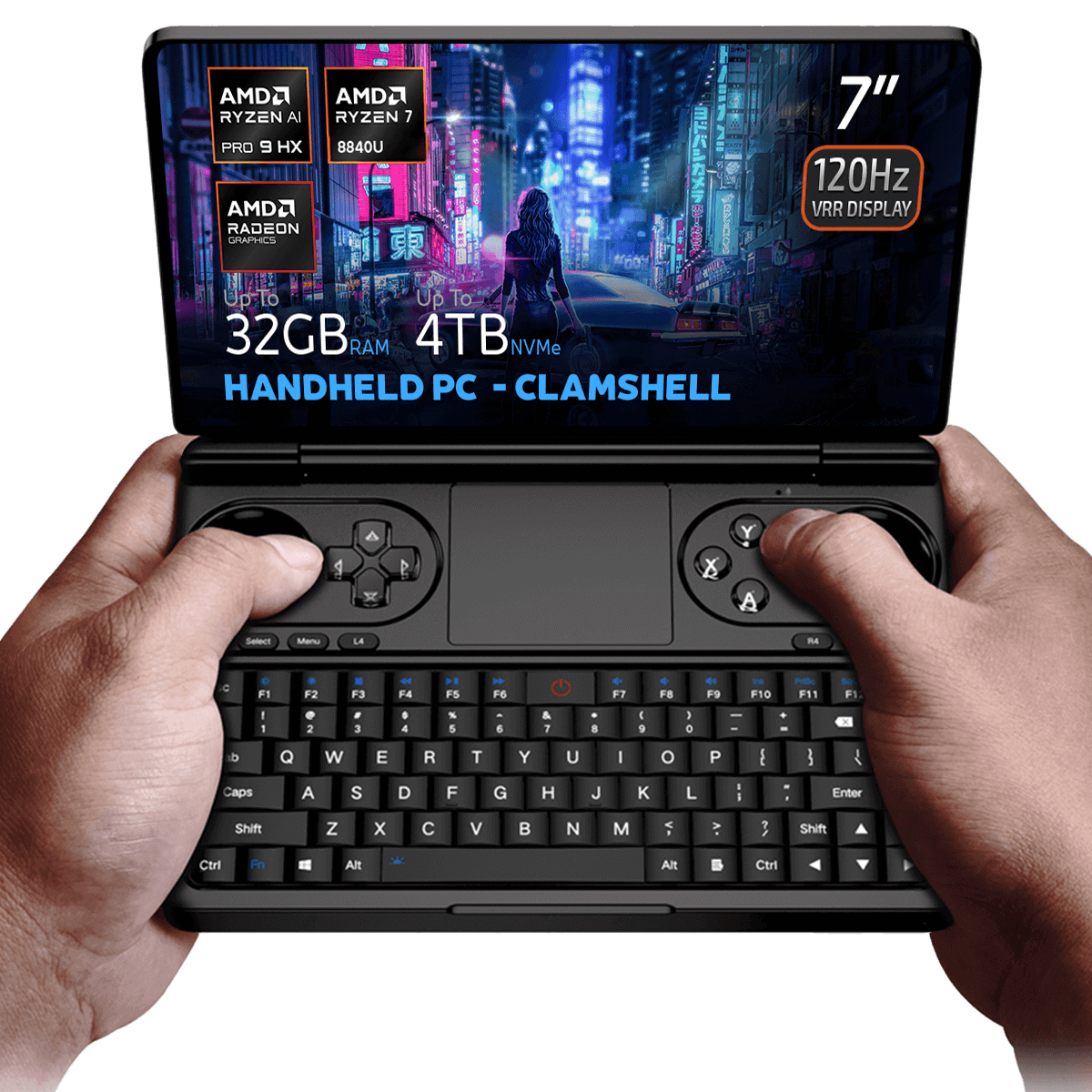
GPD WIN Mini 2025
Benchmark Summary
Overall, the benchmark results between the GPD WIN 4 2025 vs GPD WIN Mini 2025 are very close, with neither device taking a definitive lead across all tests. The WIN Mini showed slightly better GPU-related scores in modern titles and synthetic graphics tests like 3DMark Time Spy and gaming at lower resolutions,. While the GPD WIN 4 2025 held its ground with stronger multi-core CPU performance in Cinebench and 3DMark benchmarks.
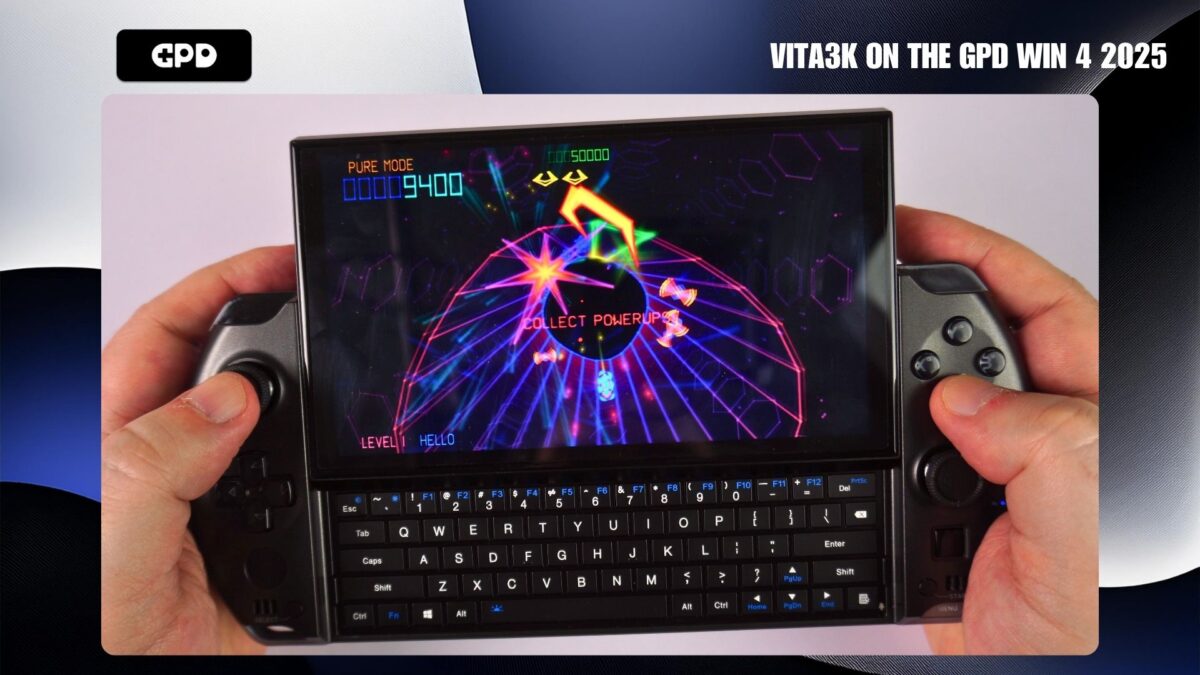
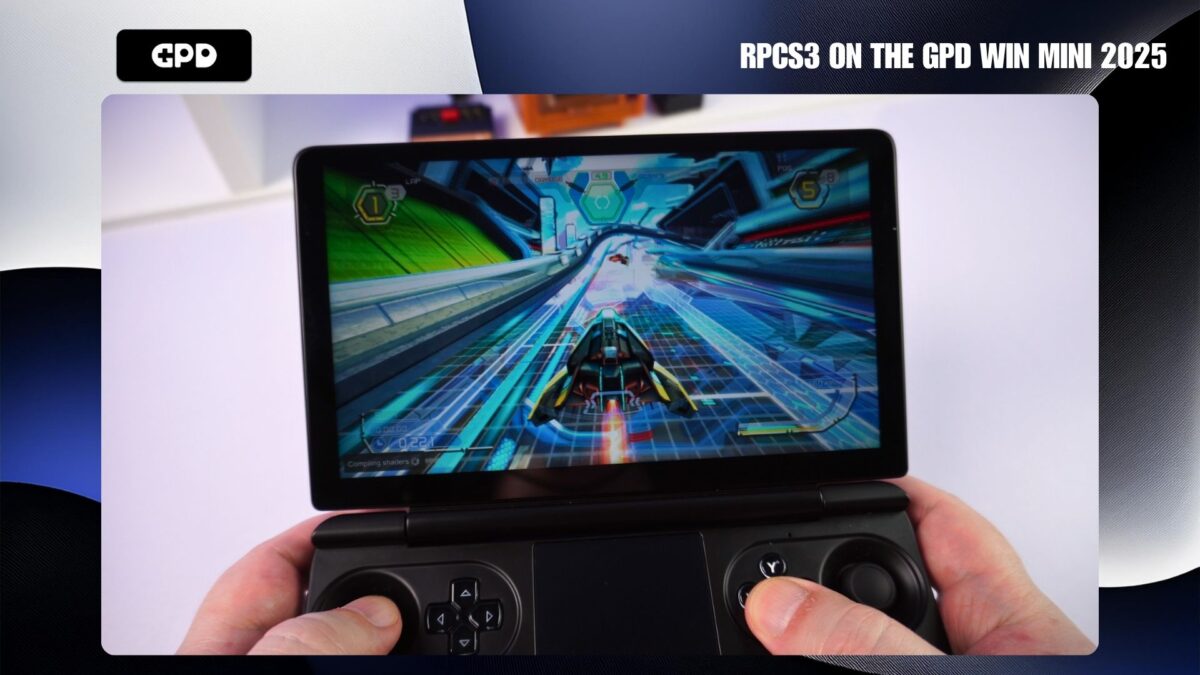
In real-world gaming scenarios like Cyberpunk 2077 and Forza Horizon 5, the differences were marginal and would likely go unnoticed in everyday use. Ultimately, both devices deliver excellent performance, and with the help of tuning software such as Handheld Companion, users can optimize CPU and GPU power allocation to better suit specific workloads—whether you’re aiming for maximum FPS in games or faster productivity in creative apps. These tweaks can transform your portable gaming PC experience.
eGPU Compatibility
A key difference is the inclusion of an OCuLink port on the GPD WIN 4 2025, alongside its USB 4 port. OCuLink generally offers higher bandwidth compared to USB 4, leading to better performance when connected to compatible eGPUs like the GPD G1 eGPU docking station and especially the more recent ONEXGPU 2.
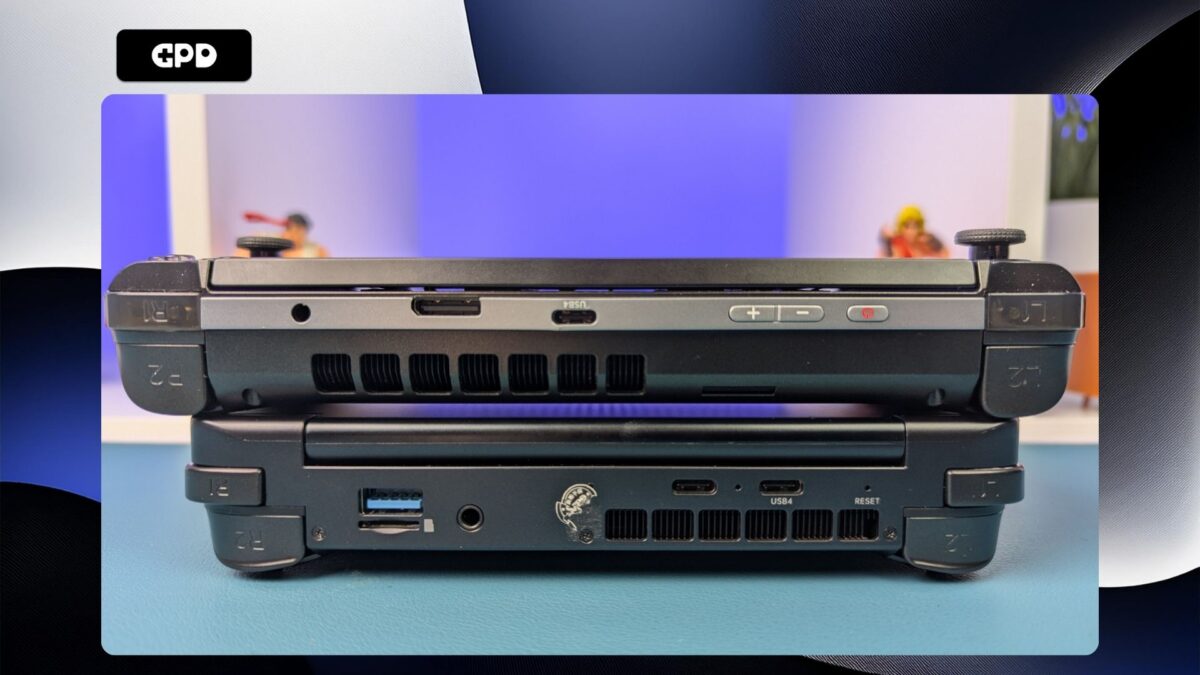
The GPD WIN Mini 2025 lacks an OCuLink port but still supports eGPU connectivity via its USB 4 port. While both can connect to eGPUs for significantly boosted graphics power (Cyberpunk benchmarks showed FPS increases to 90+ with GPD G1 and over 120-128 with ONEXGPU 2 for both devices via their respective ports), the WIN 4’s OCuLink provides a higher performance ceiling especially for newer eGPUs such as the ONEXPLAYER ONEXGPU 2.

GPD G1 (2024) eGPU Docking Station
Final Thoughts on the GPD WIN 4 2025 vs GPD WIN Mini 2025
Both the GPD WIN 4 2025 vs GPD WIN Mini 2025 are powerful handheld gaming computers offering substantial performance thanks to the AMD Ryzen AI 9 HX 370 chip. The choice between them largely comes down to form factor preference and specific feature priorities.
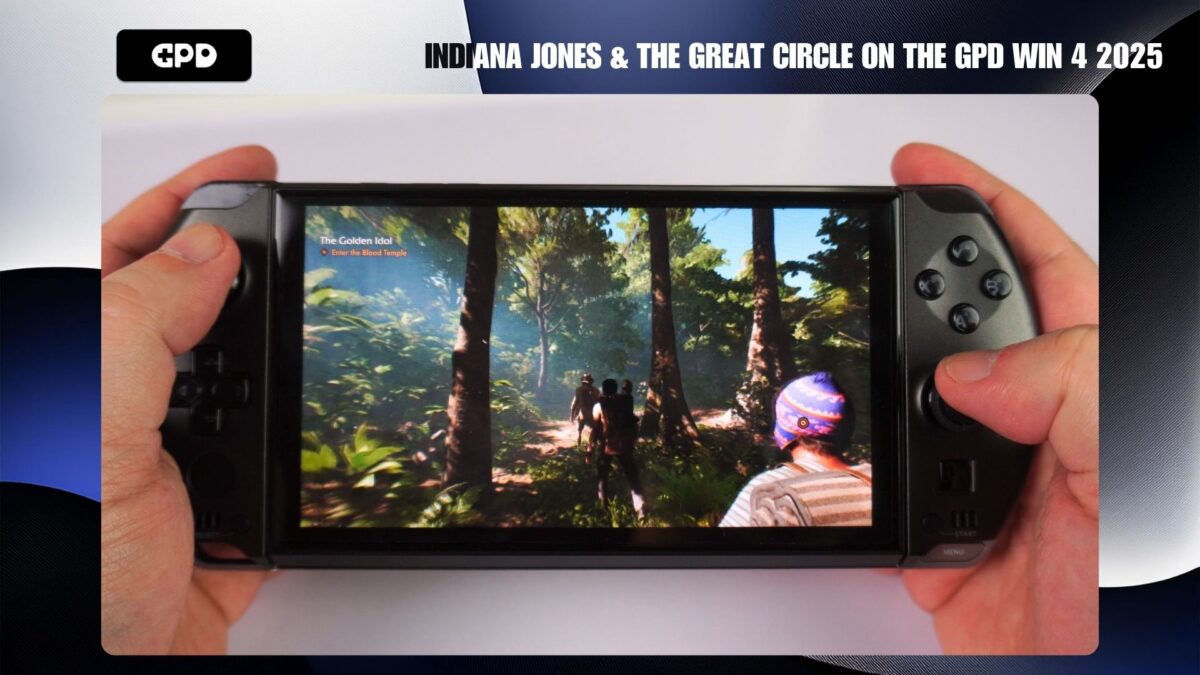

The GPD WIN 4 2025 offers a more traditional, highly compact handheld experience with its slider design and integrated optical mouse. Its inclusion of an OCuLink port is a significant advantage for users planning extensive eGPU use. It’s an excellent choice for those prioritizing maximum portability in a familiar handheld layout and potentially higher eGPU performance in a portable gaming computer.
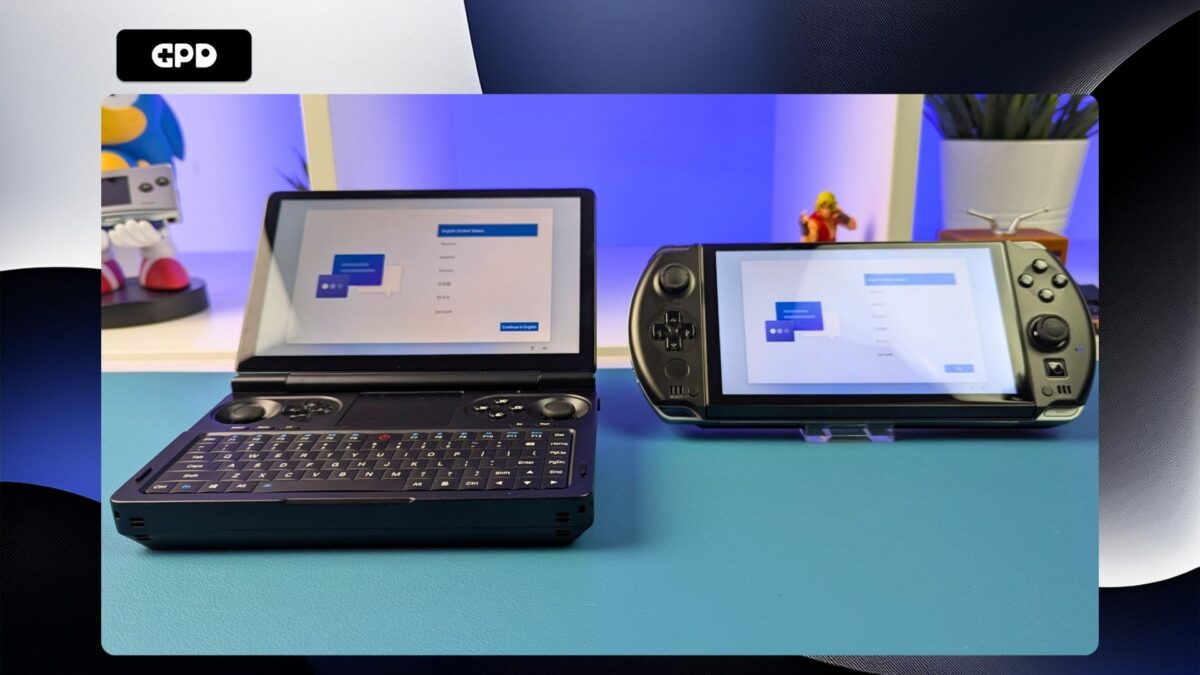
The GPD WIN Mini 2025 provides a mini-laptop experience with a larger, higher refresh rate 7-inch 120Hz display and the convenience of a clamshell design that protects the screen and keyboard. Its inclusion of a touchpad adds usability for non-gaming tasks. While slightly larger, it’s lighter and arguably achieves a great balance of screen size and portability, fitting into a jacket pocket. Its benchmark performance, particularly at higher TDPs, was frequently noted as top-tier, despite lacking OCuLink. This makes it one of the most balanced compact gaming PCs currently available.
If you would like to read more in-depth reviews of both models, you can read our GPD WIN 4 2025 review here, and our GPD WIN Mini 2025 review here.
Share Your Thoughts
Which of these refreshed handhelds catches your eye? Do you prefer the compact slider design of the GPD WIN 4 2025 or the clamshell versatility of the GPD WIN Mini 2025? Does the OCuLink port sway your decision, or is the Mini’s larger 120Hz screen more appealing? Share your thoughts and experiences in the comments below and join the discussion around the GPD WIN 4 2025 vs GPD WIN Mini 2025!
GPD WIN Mini 2025
- AMD Ryzen™ AI 9 HX 370 / Ryzen™ 7 8840U
- AMD Radeon 890M / 780M / 2900 / 2700 Mhz
- up to 64GB LPDDR5X @ 7500 MT/s
- up to 4TB High-Speed PCI-E 4.0 NVMe SSD
- WiFi 6E & Bluetooth 5.3 Support



